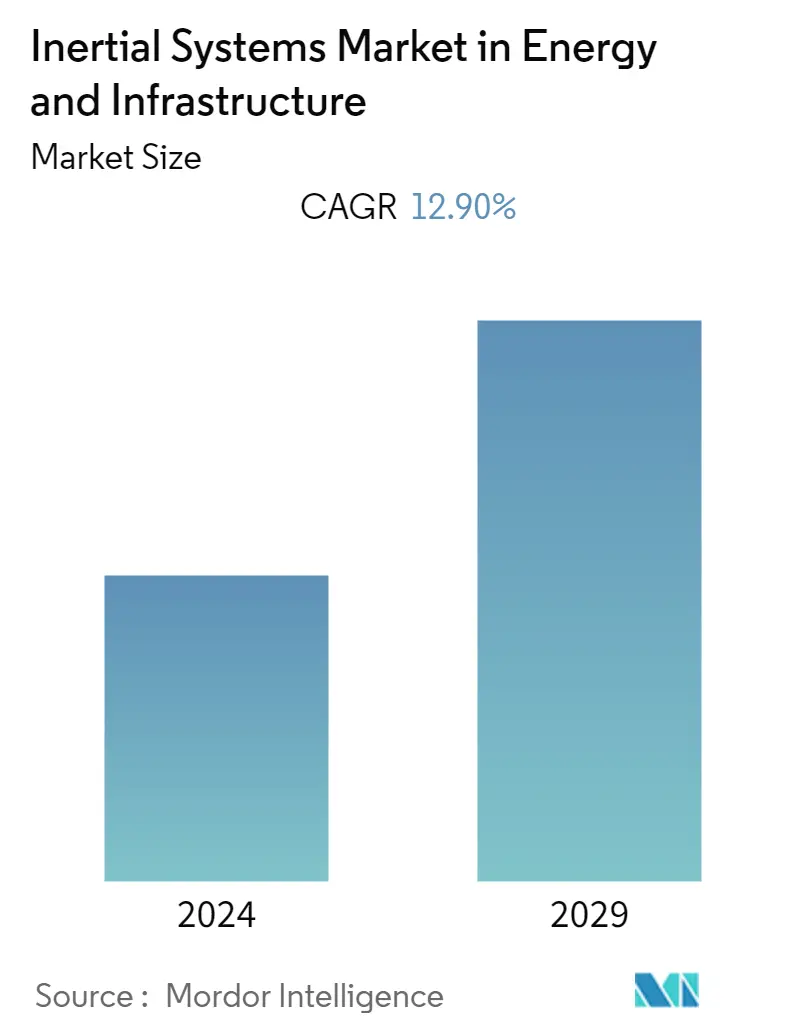Market Size of Inertial Systems Industry in Energy and Infrastructure

| Study Period | 2019 - 2029 |
| Base Year For Estimation | 2023 |
| CAGR | 12.90 % |
| Fastest Growing Market | Asia Pacific |
| Largest Market | North America |
| Market Concentration | Low |
Major Players
*Disclaimer: Major Players sorted in no particular order |
Need a report that reflects how COVID-19 has impacted this market and its growth?
Energy & Infrastructure Inertial Systems Market Analysis
The inertial systems market in energy and infrastructure was valued at USD 1.13 billion in 2020, and it is expected to reach USD 2.33 billion by 2026 and grow at a CAGR of 12.9% over the forecast period (2021-2026). The rapid advancement of the global lifestyle has resulted in the need for equipment that can be used with greater ease of use. The use of motion-sensing technology can help achieve this, which extensively uses inertial sensors.
- The emergence of microelectromechanical systems (MEMS) technology resulted in the miniaturization of mechanical and electro-mechanical elements in the field of sensors and semiconductors, with micro-fabrication and micro-machining techniques. Hence, MEMS have become an indisputable part of the future navigation systems, thus, boosting the growth of the high-end inertial systems market.
- The MEMS gyroscopes are emerging to take the market away from traditional FOG (fiber optic gyro) applications and are gaining traction majorly due to improved error characteristics, environmental stability, increased bandwidth, better g-sensitivity, and the increasing availability of embedded computational power that can run advanced fusion and sensor error modeling algorithms.
- The growth of the market studied is majorly driven by the increasing pressure on the contract manufacturers to reduce the size of the inertial systems, to make them suitable for a broad range of applications. MEMS greatly support the rapid increase in portable devices, as they offer enhanced capabilities, within small unit sizes. The inertial MEMS market forecast predicts a dramatic rise in the volume of inertial MEMS devices, over the next five years
- Furthermore, increasing applications based on motion sensing is driving the market. With the current miniaturization of sensors and related components, rising growth toward the advanced function sensors is highly being focused. For instance, Xsens has released improved versions of its MTi 1-series of motion-sensing Inertial Measurement Unit (IMU) modules, offering improved roll, pitch, and yaw measurement accuracy, and higher tolerance of mechanical stress than the first generation of the product in various energy and infrastructure projects.
- However, the large-scale adoption of inertial systems was significantly constrained by the large size and high costs. There has been a paradigm shift in the manufacturing techniques of inertial systems, after the turn of the century. Also, the integration of drift error in the navigation system is expected to pose challenges to the growth of the inertial systems market.
